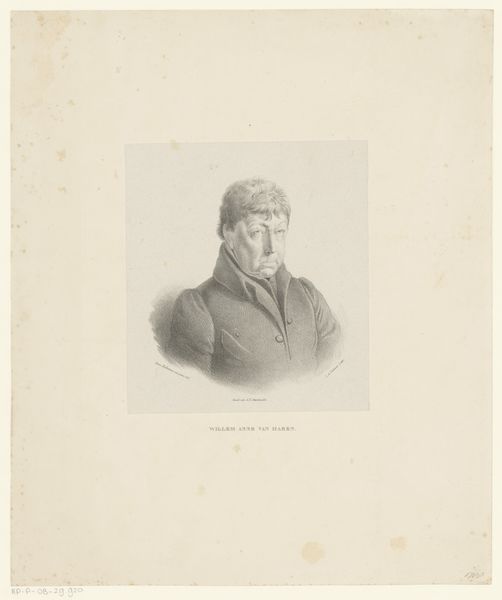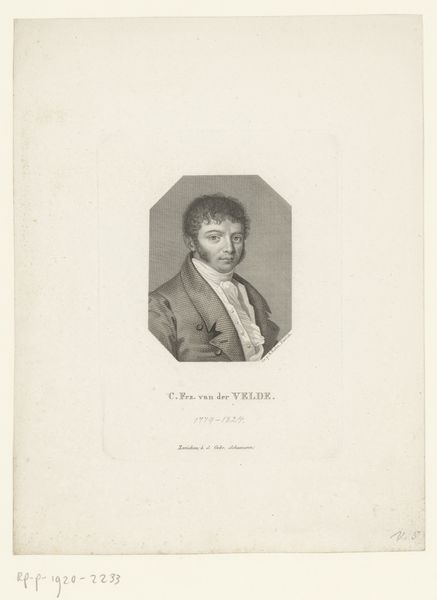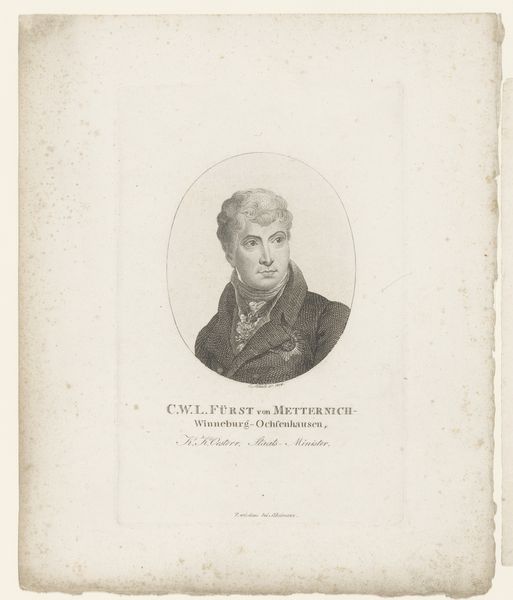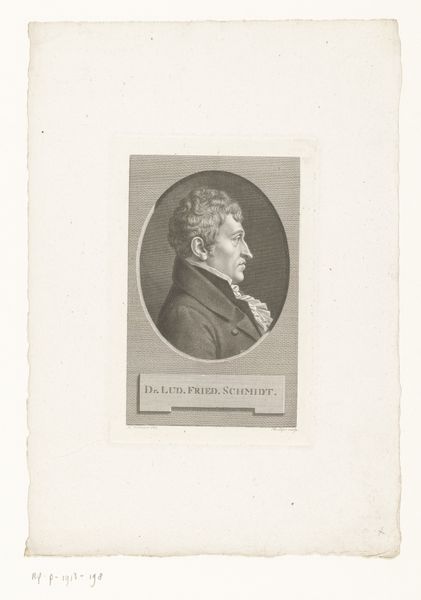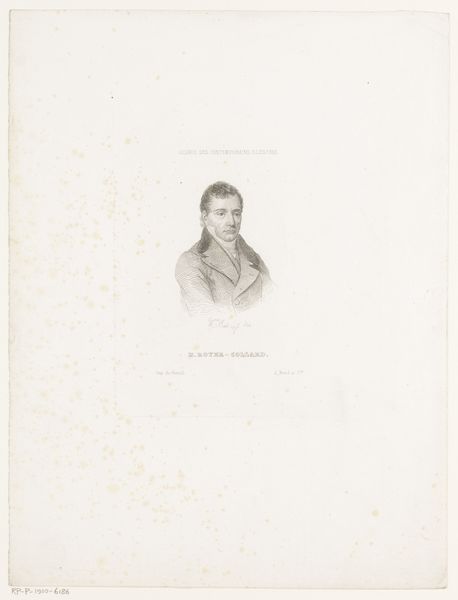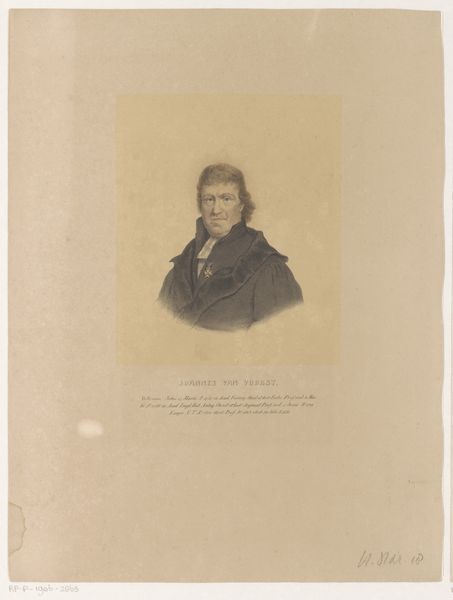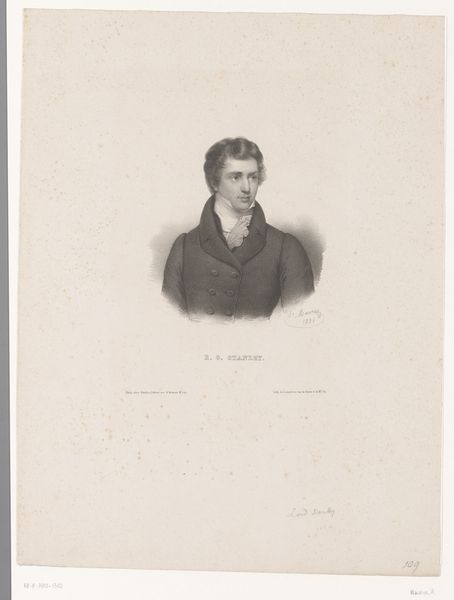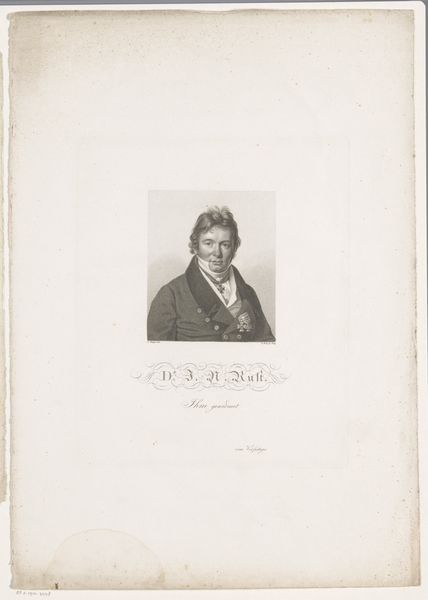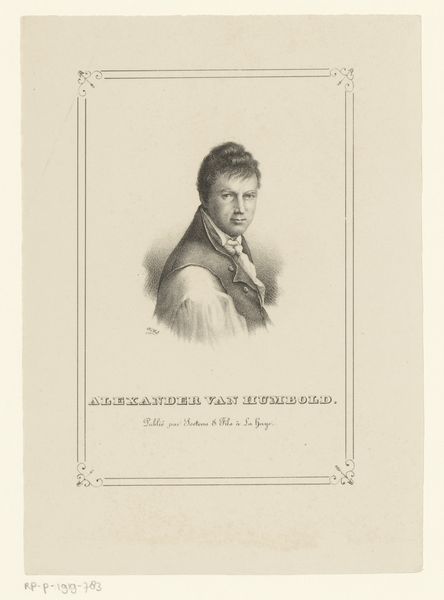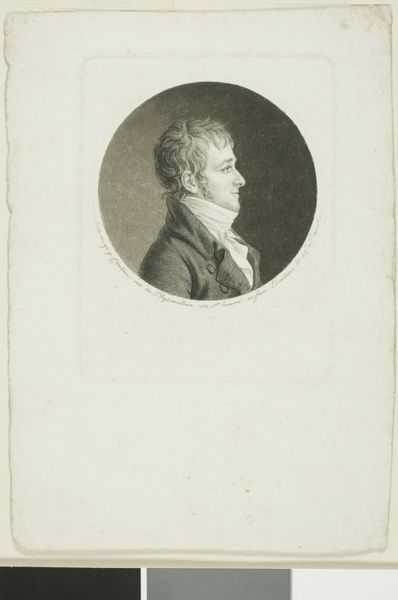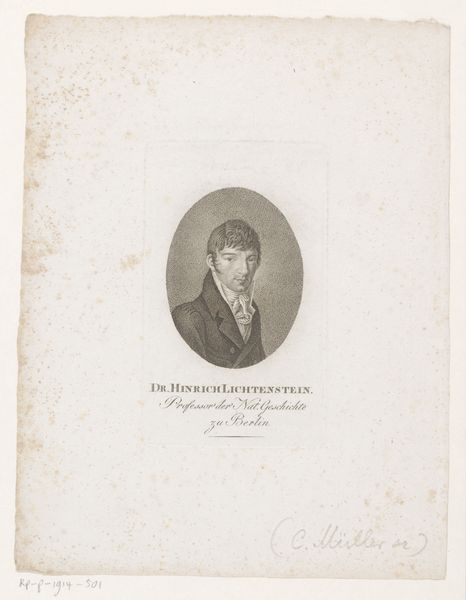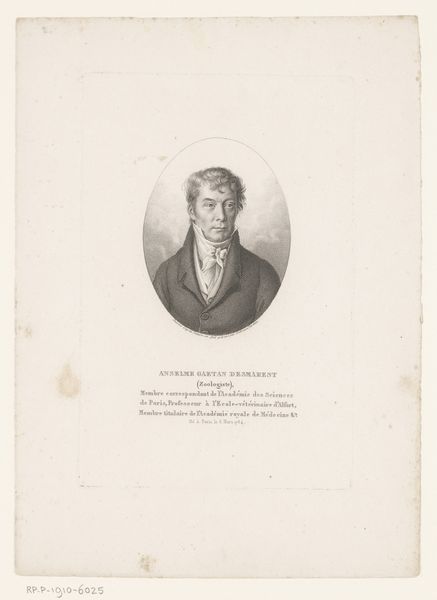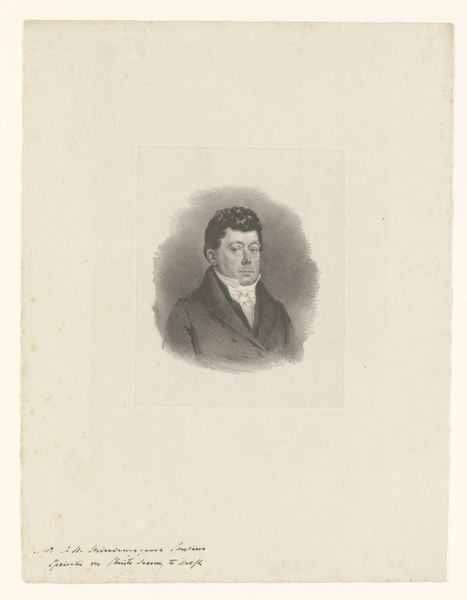
print, engraving
#
portrait
#
neoclacissism
# print
#
old engraving style
#
history-painting
#
engraving
#
realism
Dimensions: height 185 mm, width 118 mm
Copyright: Rijks Museum: Open Domain
Curator: Looking at this engraving, dated between 1785 and 1858, what strikes you? It’s identified as a portrait of Alexander von Humboldt. Editor: Initially, a subdued intelligence. The almost monochrome shading gives the impression of a thinker captured in a moment of contemplation. There's a gentle confidence about him too. Curator: The technique, old engraving style with hints of realism, feels perfectly suited. It’s as if the medium echoes the age of exploration and enlightenment embodied by Humboldt. There's a link to the art movement Neoclassicism also. What do you make of that? Editor: Ah, Neoclassicism, of course. Everything neat, contained, idealised – the visual equivalent of the Enlightenment project! But something playful resists. The hair, maybe? It's wild. There's life there, hinting that his head’s always been full of adventure. It’s that contrast between control and chaos, the contained image suggesting the wild adventures of Humboldt, so powerful. Curator: Indeed. Consider, too, the symbolic weight of portraiture itself. It’s not just a likeness. It’s a statement about status, about intellectual achievement. Humboldt, celebrated scientist and explorer, is deliberately framed within this tradition, securing his legacy within the cultural memory. Editor: It makes me wonder about the engraver, Johann Adolf Rossmässler. Did he realize he was immortalizing a legend? Did Humboldt himself feel that weight of legacy? Curator: Very likely. The conventions of such portraits were very established and carefully employed, projecting a very public image. The slight upward glance perhaps suggests inspiration, looking to new scientific discoveries… Editor: Or even looking towards the engraver himself? We read history in these images, and history reads us, doesn't it? Rossmässler might never know we are looking at his picture hundreds of years later and feeling somehow addressed, looked at! Art History, eh? Curator: It is intriguing to see how these engravings act as historical touchstones. We impose modern views and feelings while simultaneously gaining a tiny window into what life must have been back then. It’s all wrapped in this single piece of print. Editor: Indeed, and with each view of this remarkable rendering of Humboldt, it seems the world becomes somehow more open, somehow more worthy of scrutiny. Thanks for the insights!
Comments
No comments
Be the first to comment and join the conversation on the ultimate creative platform.
